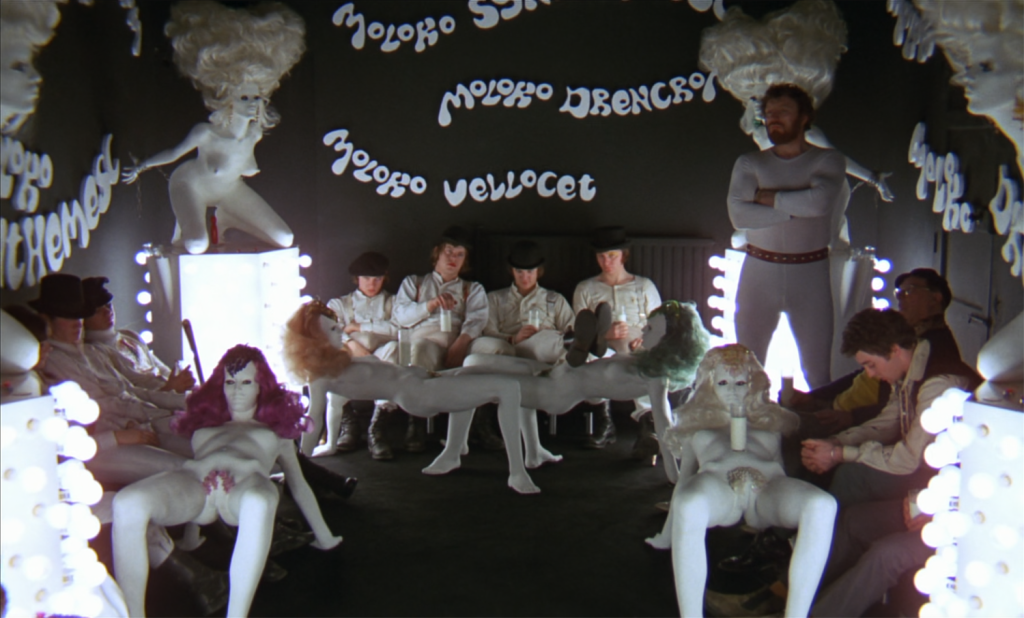Continuing my almost forgotten journey of watching each of the British Film Institute’s 100 best films of the 20th Century. Starting at 100 and working my way to Orson Welles’ The Third Man at number 1. This time, A Clockwork Orange. I’ll keep these short updates spoiler-free. Consider them a small record of moving through this series.

Unlike many of my pals at school, I wasn’t a fan of graphically violent movies. Gory horror movies were not my thing. Classic 80s slasher flicks were, obviously, right out. Nevertheless, I was obsessed with Stanley Kubrick. 2001: A Space Odyssey, and Dr. Strangelove led me, somewhat unwisely, to The Shining – a movie I love to this day. It was the adaptation of Anthony Burgess’s novel A Clockwork Orange that gave the 14-year-old me pause due to the controversial scenes of “ultra-violence” reported within. Nevertheless, I borrowed a VHS from a friend, and flying below the radar of my parents, as a cossetted wee lad, I set out to watch the spree of juvenile delinquency of Alex and his gang of Droogs. So much of the film is iconic – from the oft-Halloween-worn costume of Alex, to the Nadsat slang that gave many a 90s band its name. All that said, I don’t remember being particularly shocked by what, already in 1995, seemed a little tame in comparison.
Rewatching in 2025, the depictions of rape and violence now seem almost quaint in comparison to grim torture-porn TV shows like, for instance, The Handmaid’s Tale. Though Malcolm McDowell’s simultaneously joyous and depraved, naive and calculating, depiction of Alex is a stand-out role across all of cinema.
A special mention, though has to be given to the soundtrack. From a brutal and chilling use of Singin’ in the Rain, through a number of Deutsche Grammophon recordings, to the inimitable Wendy Carlos on her Moog synthesisers; it is spectacular from beginning to end.